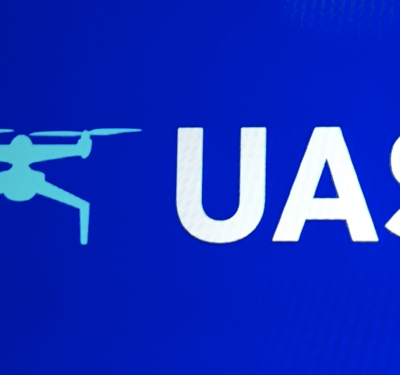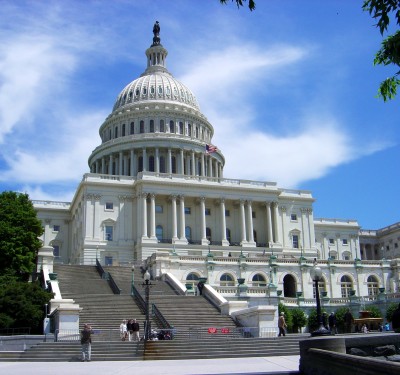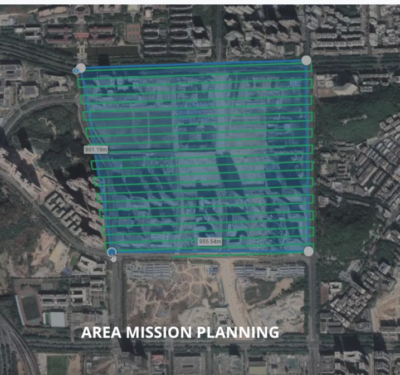From scientific research, firefighting and rainmaking to energy-saving airborne deliveries, more sustainable agriculture and renewable energy, unmanned systems are enabling the shift to a green economy.

The clock is ticking as governments, businesses and consumers around the globe take action to fight global warming. According to Climate Policy Initiative, we need at least $4.3 trillion in annual finance investments to avoid the worst impacts of climate change. Over the next 10 years, the United States alone is expected to spend more than $500 billion on climate technology and clean energy, according to a report by clean energy research firm RMI. Unmanned systems are a key tool to study or impact climate change in several sectors including climate research, wildfires, rain-making, last-mile delivery, energy and agriculture.
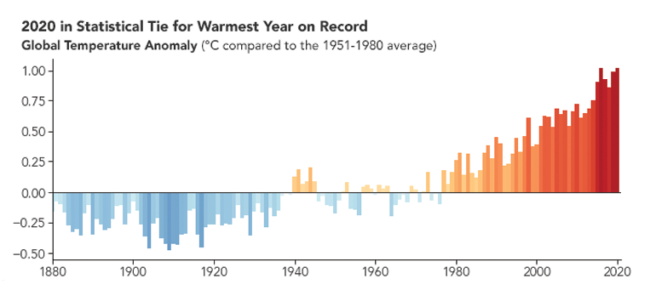
UNMANNED SYSTEMS FOR CLIMATE RESEARCH
Unmanned systems help researchers better understand and measure the impacts of climate change. Unmanned air systems often go where researchers can’t. They fly over forests to monitor tree degradation and over glaciers to measure global ice melt. Their ability to fly at low altitudes enables richer data than can be captured by satellite or conventional aircraft. Drones assist in reforestation efforts and help eliminate water waste in drought-ridden areas. Unmanned systems use in climate research is likely to grow as climate change investments increase. In 2021, more than $850 billion was spent globally to fund climate change efforts, an increase of 28% from 2020.
DRONES HELP MITIGATE THE IMPACT OF CLIMATE CHANGE
Scientists believe global warming is primarily caused by greenhouse gases produced from human activities such as burning fossil fuels for heat and energy, clearing forests, fertilizing crops, storing waste in landfills, raising livestock and producing certain products. According to the latest Intergovernmental Panel on Climate Change (IPPC) Report, human-caused greenhouse gas emissions have led to an increased frequency and/or intensity of some weather.
Global warming is expected to increase the intensity and frequency of wildfires. In recent years, drought conditions have lengthened wildfire seasons in the Western U.S. Between 2021 and 2022, wildfires accounted for more than $11.2 billion in damage across the United States. Drones have become a critical tool for the U.S. Forest Service and the California Department of Forestry and Fire Protection (CAL FIRE). Firefighting drones are expected to be a $2.4 billion market by 2031.
The economic cost of changing weather patterns, drought, wildfires, severe storms and flooding is staggering. In 2021, the U.S. experienced 20 separate billion-dollar weather and climate disasters, putting 2021 in second place for the most disasters in a calendar year, behind the record 22 separate billion-dollar events in 2020. It has been more of the same in 2022 in the U.S., with 15 mega-disasters recorded, including Hurricane Ian with a cost more than $20 million.
DRONES MAKE RAIN
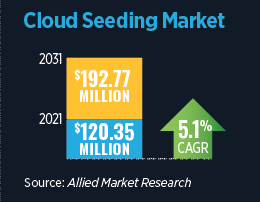
The global cloud seeding market was valued at $120.35 million in 2021, and is projected to reach $192.77 million by 2031, driven in part by rising demand to mitigate environmental threats such as extreme heat and drought. According to Allied Market Research, aerial cloud seeding accounts for two-thirds of the market. The most common method for cloud seeding uses silver iodide, which provides tiny iced nuclei on which supercooled water droplets can freeze, an essential step in precipitation formation. These nuclei provide a base for snowflakes to form. In recent years, drones are taking on the task that was previously carried out by manned aircraft because they can operate in conditions that might be too dangerous for a manned flight. A drone can also fly closer to the ground, so it may be able to take advantage of ideal atmospheric conditions at lower altitudes. While manned operations must plant cloud seed from above, drones can fly in or below cloud cover at slower speeds.
In 2022, China deployed two huge drones to seed clouds in the southwestern province of Sichuan to lessen the impact of a historic drought. In the UAE, scientists recently used drones to electrically charge clouds to produce more rainfall. In the U.S., Idaho, Utah, Colorado, Wyoming and California have expanded cloud-seeding operations.
Cloud seeding isn’t without its skeptics. It is difficult to measure what amount of precipitation might have fallen without the cloud seeding intervention. Others are concerned about the impact of chemicals and how interventions in one region, may impact the weather of other regions. Because the technique requires some clouds to work, it’s by no means a complete solution, but if conditions continue to worsen, expect continued investment to flow into this area.
DRONES FOR LAST-MILE DELIVERY SAVE ENERGY AND EMISSIONS
A new study from researchers at Carnegie Mellon University finds that using drones for last-mile delivery of small packages offers energy and greenhouse gas savings. The drone package delivery market is projected to grow from $.98 billion in 2021 to $32.1 billion by 2031, at a CAGR of 43.3% from 2021 to 2031.
The amount of carbon emissions savings depends on what type of vehicle the drone delivery replaces. Researchers based their findings on 188 flights with a DJI Matrice 100 (M100) quadcopter drone with a maximum payload of 0.5 kg. They concluded that in delivery situations with small and light items of high added value, such as medical deliveries, critical packages, and small electronics, very small drones might become a competitive tool to reduce transportation emissions in large urban centers. In these situations, GHG emissions could be reduced by 84% per package compared to diesel trucks and 29% per package if replacing electric vans. Similarly, drones can reduce the energy consumption by 94% when replacing diesel trucks and 31% when replacing electric vans.
Research at the Idaho National Laboratory for the Department of Energy’s EEMS (Energy Efficient Mobility Systems) under the direction of Principal Scientist Victor Walker also delved into energy usage of drones in last-mile delivery applications. In the study, Walker sent drones carrying no packages and drones carrying 5-, 10- and 15-pound packages of Cheez-It crackers up 50 and 100 feet for hover tests, and along a one-mile route at different speeds, either 17 or 30 miles per hour. “What we found is that drones make sense for small package deliveries,” Walker said.
Drone deliveries of a two and five-pound package (similar to a local food delivery), resulted in a 1,091% reduction in energy consumption compared to delivery via a gas-powered SUV. When compared to an electric delivery vehicle the energy savings was 92%. Researchers also determined that if drones were forced to fly along existing transportation routes, they would use considerably more energy. “Making all those turns increases energy usage by 70%,” Walker said.
Walker also sees opportunity for drones in business-to-business localized delivery. “Drones could be used to deliver in any situation where time is of the essence and the weight is low,” Walker said.
The fixed-wing drones deployed in the study used half of the energy of the rotary drones when in forward flight. “For maximum energy efficiency the key is to right-size the drone to the application.” Walker sees opportunities for drone deliveries in underserved rural settings using a hybrid fixed wing UAS with vertical take-off and landing.
DRONES HELP MAINTAIN RENEWABLE ENERGY RESOURCES
Nowhere is the transition to green more visible than in the energy industry. Energy providers are making huge investments in renewable energy sources such as wind, solar and green hydrogen plants. In solar, wind and on the traditional grid, drones have proven themselves to be useful tools, greatly reducing inspection costs. Adoption is strong in energy and it currently represents the largest sector of the commercial drone market. By 2026, drones in energy will be valued at $6 billion, or 14.5% of a $41.36 billion market.
On solar installations, drones equipped with thermal imaging identify dead spots and defects at installation and during annual inspections. Bad cells can reduce efficiency.
Wind farms also need to be maintained, and drones are a cost-effective way to do the job. Robots are also getting attention in the energy sector. A 2021 study from Drone Analyst found 63% of energy and utilities companies also planned to purchase robotics systems.
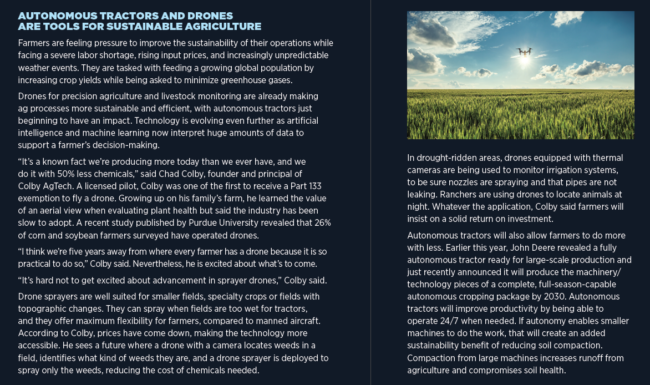
DRONES HELP FIGHT WILDFIRES
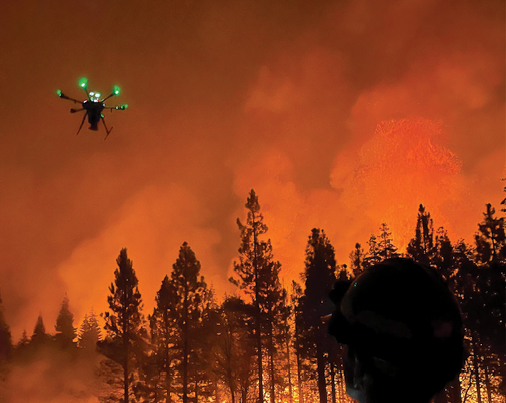
“UAS are able to fly when manned assets cannot whether that is because of inversions and low visibility conditions or simply by flying at night,” said Emma Ballantyne with Precision Integrate Programs, a company that provides on-call UAS services to the Department of Interior and Bureau of Land Management for wildfire, search and rescue, Hot Spot Detection and Burned Area Emergency Response (BAER) missions.
Equipped with thermal based imaging or infrared sensors, UAS fly through the smoke and wind to help firefighters identify areas where the fire is still active, where it is spreading and where spot fires have emerged. “When the helicopters and fixed-wing planes are ready to go in the morning, they can operate off the maps UAS created overnight of hotspots, fire borders, and more,” Ballantyne said. The company flies a Lockheed Martin Stalker UAS, a 28-pound-unit that can fly four to eight hours, depending on the configuration. “Being able to deploy this asset in under 15 minutes after approval from the Fire Manager is key,” Ballantyne said.
Drones can also carry fire suppression materials and can be used to start fires. Drone Amplified’s IGNIS system is being used to conduct backburns and prescribed fires at a lower cost with increased safety and increased availability.
NASA’s Scalable Traffic management for Emergency Response Operations (STEReO) project will allow small UAS to fly more safely during disaster management events. Joey Mercer, a research psychologist in the Human Systems Integration Division at NASA Ames Research Center, said the first test of the system during an active fire was during the 2021 Dixie Fire.
According to Mercer, operators of the uncrewed aircraft take on 100% of see-and-avoid responsibility. “STEReO’s UASP-kit helps to monitor the airspace and can alert operators to nearby aircraft that might be too close for comfort.” Five single-user tool kits (the UASP-kit) are currently being field tested.
“It really showed us how important it was to design solutions that were easy to use, and easy to incorporate into those environments,” Mercer said. “Simpler, faster to setup, and smaller to carry seemed way more important than powerful and full-featured.”


